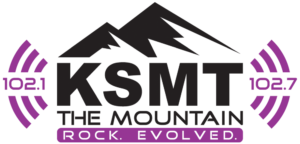Changes are coming to the way the Colorado Department of Transportation is handling avalanche mitigation efforts on the Western Slope.
Last week CDOT, in partnership with the Colorado Avalanche Information Center and the forest service, completed the implementation of two new O’bellx Avalanche-Control Systems along Highway 40 near Berthoud Pass as first reported by CBS 4. While more traditional avalanche mitigation techniques include crews placing explosives by hand or using avalaunchers — compressed-gas cannons that fire projectiles into the mountain — the O’bellx system is fixed on the mountain for the entire season. The devices are placed on stands above the snow, and are triggered remotely by CDOT personnel. Once triggered, the device dispenses a mixture of hydrogen and oxygen gas into an explosion chamber, and ignites with a spark plug to initiate an explosion. Once the season is over the systems will be removed until next winter.
“As far as the program is concerned our goal is to move away from the traditional methods of delivering explosives onto the slopes for a couple reasons,” said Jaime Yount, avalanche program manager with CDOT. “Worker safety is the big one, and we feel that with these newer technologies where you’re getting an air blast there’s certainly an increase in public safety. But we’re also more efficient with these fixed-in-place systems with our closures and operations. So we can conduct our work a lot quicker than we can with traditional methods. And hopefully that translates to a much better level of service we can provide to the traveling public.”
In 2014, two employees with CDOT and the CAIC were injured after an avalauncher prematurely detonated within the barrel while they were performing mitigation work on Loveland Pass.
“That was a big driver in looking at new technology and new programs across the country that have this technology,” said Yount.
But the new mitigation devices may also improve safety in other capacities, from removing the dangers of unexploded ordinance on the slopes, to improved and more frequent detonations resulting in lower avalanche risks for motorists traveling mountain corridors. Yount said that with the new technology, CDOT will be able to perform mitigation efforts more frequently, and because the devices are set in a fixed location, controlled avalanches will be easier to predict in their slide paths.
Recommended Stories For You
The new systems will also allow CDOT to be more efficient in their mitigation efforts. Yount noted that because the devices are remote operated, up to seven detonations could take place at once, and more frequent detonations means quicker cleanup and shorter road closures.
“Our hope is we can keep these avalanches from getting to these large destructive sizes,” said Yount. “When you get 20 feet of snow on the road that’s a lot of effort and time to get cleaned up. If we can do a few more missions, a little more frequent control work and stay ahead of the buildup of snow on these avalanche paths we’ll see improvement in the long run through the season.”
Yount said that in lieu of the sometimes hour-long road closures for avalanche mitigation work, the new systems will allow CDOT to reduce closures to around 15-20 minutes. Additionally, more closures will be able to take place at night, further minimizing impacts to motorists.
Along with the two devices recently set up at Berthoud Pass, there will be 13 others installed in the coming weeks including eight on the Loop Road slide path near the I-70 west portal of the Eisenhower-Johnson Memorial Tunnels, and five on the Batch Plant and Whistler slide paths on the north side of I-70 between the tunnels and Silverthorne. Each device costs $120,000 plus installation.
Yount also noted that CDOT intends to continue building onto the array in the southern mountains in the coming years.
“It’s certainly not an everyday problem, but when these avalanche cycles happen they can be dangerous,” said Yount. “There’s been some highway fatalities in Colorado, more than in any other state. It’s a small piece of our winter operations, but it’s a piece we take seriously. We’re really trying to modernize our program to serve the public better, and decrease the risk to our employees and traveling public. … with this new technology we can minimize the impacts to the public, and operate more efficiently when we get these big winter storms.”

